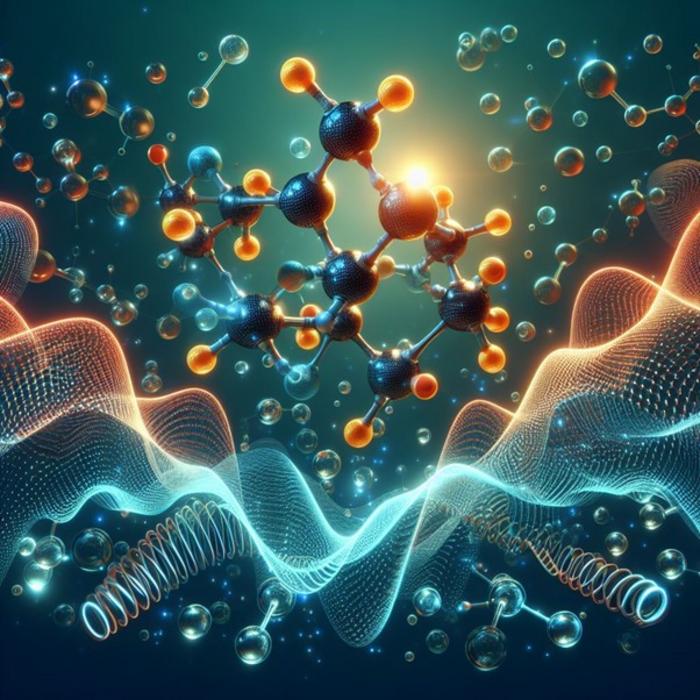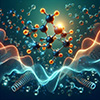| May 08, 2024 |
|
(Nanowerk News) Since the discovery of quantum mechanics more than a hundred years ago, it has been known that electrons in molecules can be coupled to the motion of the atoms that make up the molecules. Often referred to as molecular vibrations, the motion of atoms act like tiny springs, undergoing periodic motion. For electrons in these systems, being joined to the hip with these vibrations means they are constantly in motion too, dancing to the tune of the atoms, on timescales of a millionth of a billionth of a second.
|
|
But all this dancing around leads to a loss of energy and limits the performance of organic molecules in applications like organic light emitting diodes (OLEDs), infrared sensors and fluorescent biomarkers used in the study of cells and for tagging diseases such as cancer cells.
|
|
Now, researchers using laser-based spectroscopic techniques have discovered ‘new molecular design rules’ capable of halting this molecular dance. Their results, reported in Nature (“Decoupling excitons from high-frequency vibrations in organic molecules”), revealed crucial design principles that can stop the coupling of electrons to atomic vibrations, in effect shutting down their hectic dancing and propelling the molecules to achieve unparalleled performance.
|
 |
| Artist’s illustration of an organic molecules light emission property modulated by quantum dance of the atoms. (Image: Pratyush Ghosh, Cavendish Laboratory, University of Cambridge)
|
|
“All organic molecules, such as those found in living cells or within the screen of your phone consist of carbon atoms connected to each other via a chemical bond,” said Cavendish PhD student Pratyush Ghosh, first author of the study and member of St John’s College.
|
|
“Those chemical bonds are like tiny vibrating springs, which are generally felt by electrons, impairing the performance of molecules and devices. However, we have now found that certain molecules can avoid these detrimental effects when we restrict the geometric and electronic structure of the molecule to some special configurations.”
|
|
To demonstrate these design principles, the scientists designed a series of efficient near-infrared emitting (680-800 nm) molecules. In these molecules, energy losses resulting from vibrations – essentially, electrons dancing to the tune of atoms – were more than 100 times lower than in previous organic molecules.
|
|
This understanding and development of new rules to design light emitting molecules has opened an extremely interesting trajectory for the future, where these fundamental observations can be applied to industries.
|
|
“These molecules also have a wide range of applications today. The task now is to translate our discovery to make better technologies, from enhanced displays to improved molecules for bio-medical imaging and disease detection,” concluded Professor Akshay Rao from Cavendish Laboratory, who led this research.
|


